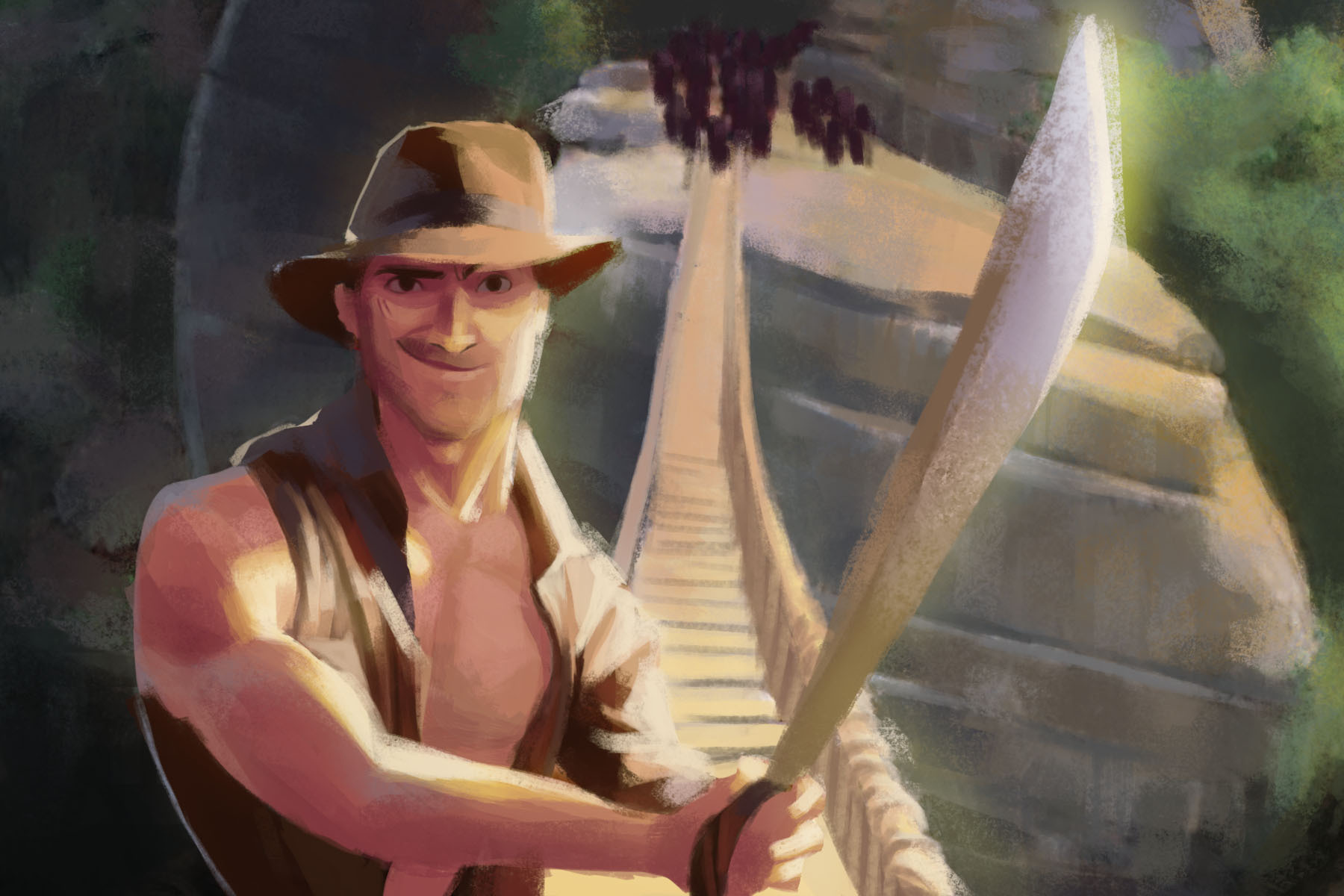Earlier this year, I watched “Indiana Jones and Temple of Doom” with my family. My mother loves the types of movies where a charming male protagonist saves the world with a pretty love interest — especially when that charming protagonist is Harrison Ford. She’s not wrong in seeing the entertainment value of the “Indiana Jones” franchise, but when I watched Steven Spielberg’s depiction of “Indians,” I was horrified, disgusted and borderline nauseated, but not because of the human sacrifices or the monkey brains served as “Indian food” at dinner.
The stereotypical and blatantly racist, culturally insensitive and ignorant portrayal of brown people being saved by “White Savior” Indiana Jones from their brutish satanic rituals shocked me. This cult classic did not age well, and it’s time for us to reconcile with what a movie like this means for its audience.
At the beginning of the movie, Indiana Jones is trading the remains of Emperor Nurhaci with Chinese gang members for a diamond in Shanghai. The scene is introduced by a fantastic dance number to the song “Anything Goes,” where Kate Capshaw as Willie Scott sings in Mandarin so poorly that, as a fluent speaker, I could not understand a single word. She and her fellow white nightclub dancers prance around in scandalized traditional Chinese qipao dresses and bedazzled rice farmer hats.
I was a little taken aback but reminded myself that it was 1984 when this was shot, and this slightly problematic use of “Asianness” as an aesthetic wasn’t a big deal then. Little did I know that this was the least offensive part of the movie I would encounter.
After Indiana Jones escapes the “evil Asians,” he jumps out of a plane with Willie Scott and his Chinese sidekick, Short Round, played by Jonathon Ke Quan, where they land in colonial-era India. The first “Indian” we see on screen is a gaunt and mysterious old man with a terrible white-haired wig. Indy and his crew are then led to a ravaged village where all the impoverished village members swarm him, kneel around him, and beg him to save them from some mystic evil. A skinny Indian boy brings him a clue from the palace and then dies in his arms.
By the end of the movie, Indiana Jones returns the village’s sacred stone, selflessly putting the traditions of this village before his “This belongs in a museum!” mantra. As I watched these scenes unfold on screen, I couldn’t help but notice how perfectly this movie fell into a “white savior” narrative.
“White saviorism” refers to an idea in which a white person, or white culture, rescues people of color from their own supposedly debased situation.
Nigerian American novelist Teju Cole says that white people are celebrated for doing this type of charitable work, even as they ignore the systems that ensure their privilege but oppress those they are trying to help. White saviorism is the underlying sentiment that fueled imperialism, especially seen in Britain’s colonization of India in the 18th century, which is demonstrated when Indiana Jones meets the Indians in the movie.
Rudyard Kipling’s famous 1899 poem “The White Man’s Burden” epitomizes this narrative of the selfless Western savior spreading ideas of modernization to “savages.” When non-whites are portrayed as poor and uncivilized, it stands as a justification for Western culture to come in and save these people from themselves. It’s patronizing, racist and self-glorifying, and in reality, it is just a “humanitarian” defense of the economic and exploitative motives of imperialism.
Beyond the questionable undertones of the movie, the most obviously problematic parts are rooted in its inaccurate portrayals of Indian people and Hinduism. From the depictions of the villagers as poor and dirty, to the appalling dinner scene at Pankot Palace, the movie caricatures both Indian culture and the Hindu religion for cheap laughs, with brown people as the butt of the joke.
Spielberg’s idea of what Indian food looks like is live baby snakes, fried bugs, eyeball soup, and chilled monkey brains for dessert. Not only are a majority of Indians vegetarian, but this is a grossly inaccurate portrayal that denigrates Indian culture.
Mola Ram, the cartoonishly evil leader of the Thuggee cult, worships the Hindu goddess Kali Ma through human sacrifices. This inaccurate and disrespectful portrayal of Hinduism as a cult-ish, satanic and evil religion gives another reason why white saviors like the British Empire should come and wipe out such backward and dangerous “Indian” practices. The depiction of Indian culture and religion was so insulting that India even banned the movie from being shown in the country.
Steven Spielberg has been criticized for his blatant disregard for cultural accuracy. Though I believe most of us can all get a laugh out of foreign accents and exaggerated racial stereotypes when the irony is obvious, when there are so few complex brown characters on screen already, this kind of negative and inaccurate representation of South Asian culture on-screen is demeaning.
The problem with only having caricatured and degrading depictions of Indians and South Asians in film is that audiences — especially young audiences — often shape their beliefs around what they see on TV. When they see Indian food as gross, Hinduism as satanic, and brown people as poor, starved and in need of white saviors, it undeniably influences the way America views minorities.
When the only representation we see in the media of South Asians are Dopinder the dopey cabbie from “Deadpool,” Apu the Kwik-E-Mart store owner from the “Simpsons,” and other two-dimensional stereotypes, it reveals that Hollywood has a bigger problem with unintentional bigoted cultural education that it provides through family films like “Indiana Jones.”
Representation of minorities in Hollywood and on television has improved over the past few years, with films like “Crazy Rich Asians” and “Black Panther” and TV shows like “Fresh Off the Boat” and “Master of None.” It’s only in acknowledging mistakes made in the past that we can learn about how to accurately and respectfully share narratives outside of the white standard. There is power in accurate representation in the media.

















